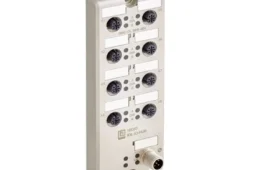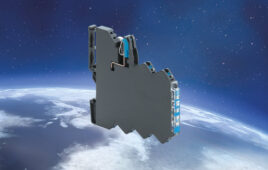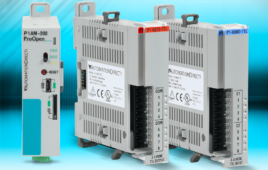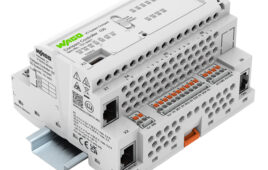Edited by Kathryn Tomiello, Staff Editor, Design World
Edited by Kathryn Tomiello, Staff Editor, Design World
The right partner is critical to the successful execution and delivery of a design, as Foresite, a process consulting company and analytical laboratory, discovered. The engineers designed a special test cell for C3 printed circuit boards and then outsourced the necessary molding and assembly operations overseas. 
Proper cleaning of the C3 Test Cell’s molded substrates is critical to its design and proper function, so Minnesota Rubber QMR Plastics manufactures the unit in a class 100,000 clean molding environment.
Although competent in many ways, the overseas manufacturer had difficulty with quality during the prototyping, pre-production, and early production stages, which delayed the cell’s introduction. “Quality questions arose initially because of the mold’s design,” said Steve Ring, director of New Product Development, Foresite. “Despite secondary cleaning efforts by the overseas supplier, molded part cleanliness did not meet our specifications.”
As the product development group discovered, outsourcing has many advantages, but the quality of the vendor-customer relationship often determines the project’s success. In the Foresite example, logistics and responsiveness had a significant impact on product quality. Following some in-house attempts to fix the problem, the company turned to another vendor, Minnesota Rubber QMR Plastics, for recommendations.
“After inspecting the parts and listening to Foresite’s descriptions of the assembly and contamination problems, we knew the solution began with the design of the molded components,” said Rick Strand, director of engineering at Minnesota Rubber. “A molded assembly’s fit and cleanliness starts with the correct mold design,” he continued.
For a molded assembly to function properly, correct cooling is critical. In the case of the C3 testing system, the mold components were not cooling properly. This affected component fit, as well as the function of the snap-fit feature that seals the device. Because of these structural problems, the vacuum readings within each cell’s test chamber were too low and too varied.
The C3 system tests for printed circuit board contamination. The system looks for corrosive residues in a selected 0.1 sq. in. (0.1 in.2) area of the board’s surface each time.
“Without proper cooling and other features in molds, all other steps in the mold and assembly process downstream can go awry,” noted Strand. The QMR team observed that both the cell body mold and cell cap mold contained cooling lines, but the lines were insufficient in certain critical areas. So the team increased these cooling areas to improve the molded part’s dimensions and dimensional stability. They also modified the machine molding cycle.
The main component of the C3 system is a four-part collection cell that includes a molded, hollow cell body and cap, an electrode, and an end seal. The red arrow indicates the microburst of steam directed at the PCB’s surface, and the blue arrow represents the movement of the sample from the test area to the testing chamber via the vacuum.
Another change was needed, however, to ensure the assembly would function properly. “Making certain finished molded components were clean was key,” said Ring. Because of the difficulties, however, the QMR team decided to change materials. They turned to medical grade polyprophylene and opted for a higher quality blend.
The new partnership ultimately produced a better test cell and helped bring it to market faster. Tests of the cells in Foresite’s laboratory verified the improvements in cleanliness. Plus, the company eliminated its on-site cell cleaning.
Within minutes, the system outputs results. This way, problems can be fixed early in the PCB’s production.
What’s more, QMR specified additional cleaning measures after the molding operation, prior to assembly. These included the use of a recirculating, filtering cleaning tank system and a parts drying oven. “Then we did some trial runs on the components and final assemblies. The test cells had a 50% vacuum improvement, testing consistently at 24 In.Hg,” said Ring.
Steam cleaning
The molded test cell at issue is used in the C3 printed circuit board (PCB) testing system. In most applications, it is critical that these test cells deliver precise readings to ensure repeatable results.
The C3 PCB testing system analyzes and cleans the boards in real-time. The test cell consists of a body and cap, an electrode, and an end seal. The electrode fits into two slots in the cell body that align and hold it securely in position.
It uses a steaming process to extract residues in sensitive areas of printed circuit boards (PCB), and then it electrically tests them for corrosion. The system directs microbursts of steam through 1/16 in. (1.6 mm) diameter flow-paths, into a 3/8 in. (9.5 mm) diameter opening in the end seal in the test chamber. When it reaches the test area, a vacuum pulls the sample up through another path. In the test chamber the sample is analyzed electrically for corrosive residues, and the information is transmitted to the system’s computer. The computer determines the sample’s cleanliness and stores it for future reference. The C3 tests 0.1 sq. in. (0.1 in.2) each and every time, removing residue in the tested area rather than testing the entire surface of the sample, which can dilute test results and mask problems. The test cells are set for one time usage and disposed afterward.
Because cleanliness is critical to the proper function of the device, the two molding components are made from medical grade polypropylene.
The partnership illustrates the importance of logistics and responsiveness in a vendor/customer relationship. “Having Minnesota Rubber handle the entire process made sense the further we got into each of the mold, assemble, and packaging steps,” reported Ring. “Good communication plus the time and distance advantages with QMR were important to the success of this project, but the overriding factors were their capabilities and responsiveness.”
Minnesota Rubber QMR Plastics
www.mnrubber.com
Foresite, Inc.
www.residues.com
:: Design World ::
Filed Under: Assembly, TEST & MEASUREMENT





Tell Us What You Think!